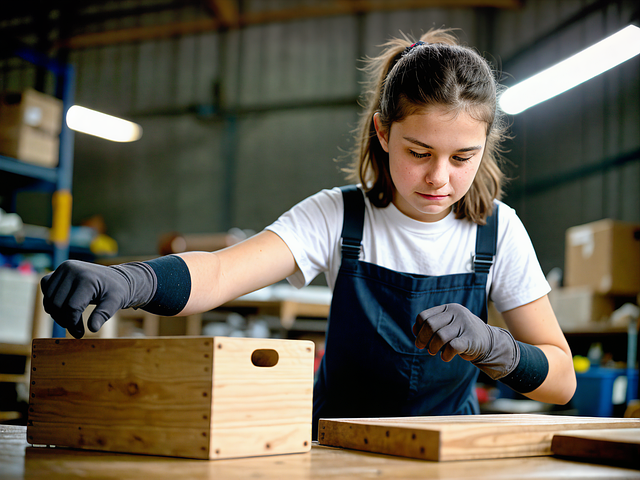Ergonomic workspace design, guided by the 5S continuous improvement methodology (Sort, Set in Order, Shine, Standardize, Sustain), enhances employee health, productivity, and satisfaction. This involves organizing spaces, standardizing tasks, using adjustable furniture & proper lighting, and promoting regular breaks to prevent fatigue. By regularly assessing and refining layouts, equipment, and practices, organizations create productive, safe, and adaptable workspaces that support both short-term goals and overall well-being, fostering a culture of continuous improvement.
Ergonomic workspace design is more than just comfortable furniture; it’s a strategic approach to enhance productivity, reduce strain, and foster a culture of continuous improvement. This article delves into the fundamental principles of ergonomic design, highlighting key components for creating an optimal environment. We explore how implementing sustainable practices through the 5s continuous improvement methodology can transform offices, ensuring comfort, efficiency, and employee well-being.
- Understanding Ergonomic Workspace Design: The Foundation of 5s Continuous Improvement
- Key Components for Creating an Ergonomic Environment
- Implementing and Maintaining a Sustainable Ergonomic Workspace Culture
Understanding Ergonomic Workspace Design: The Foundation of 5s Continuous Improvement

Ergonomic workspace design goes beyond aesthetics; it’s a strategic approach to create environments that promote employee health, productivity, and overall well-being. At its core, this design philosophy aligns with the principles of the 5s continuous improvement methodology—a system aimed at optimizing workplace efficiency and quality. “Sort,” “Set in order,” “Shine,” “Standardize,” and “Sustain” are the five pillars that form the foundation for an ergonomic workspace.
By implementing these 5s, organizations can foster a culture of organization and safety. Sort involves decluttering spaces to minimize distractions, Set in Order ensures everything has its place for easy accessibility, Shine emphasizes regular cleaning for hygiene, Standardize establishes consistent layouts and procedures, and Sustain focuses on maintaining the system over time. This holistic approach not only enhances employee satisfaction but also drives operational excellence through a comfortable, efficient workspace.
Key Components for Creating an Ergonomic Environment

Creating an ergonomic workspace involves focusing on key components that support comfort, efficiency, and overall well-being. One proven method to achieve this is through adopting the 5s continuous improvement philosophy. Start by organizing your space, ensuring everything has a designated place and is easily accessible. This reduces clutter and promotes a calm atmosphere conducive to concentration. Next, standardize tasks, using tools and equipment that facilitate efficient workflows without straining bodies or minds. Regularly reviewing and adjusting these standards keeps the workspace optimized for current needs.
Ergonomics also demands attention to physical aspects. Invest in adjustable furniture that allows for height adjustments, promoting a neutral posture throughout the day. Consider standing desks or active workstations that encourage movement. Similarly, ensure proper lighting to minimize eye strain and incorporate breaks into routines to prevent mental fatigue. By integrating these principles, you create an environment that not only supports productivity but also prevents long-term health issues associated with poor work habits.
Implementing and Maintaining a Sustainable Ergonomic Workspace Culture

Creating an ergonomic workspace goes beyond initial setup; it’s a culture that requires consistent attention and fostering. To maintain an effective ergonomic environment, organizations should adopt a mindset of continuous improvement, inspired by the 5S methodology. Regularly assessing and adjusting workplace layouts, equipment, and practices ensures employees remain comfortable and productive throughout the day. This involves simple yet impactful changes like organizing tools and resources efficiently, replacing worn-out furniture, and promoting active work positions to reduce static postures.
Encouraging open communication about ergonomic needs is vital. Employees should feel empowered to suggest modifications based on their unique preferences and tasks. By integrating 5S principles into daily operations, organizations can create a sustainable culture where ergonomic design is not just an occasional project but an ongoing effort that adapts to evolving workplace demands, ultimately enhancing job satisfaction and overall well-being.
Ergonomic workspace design goes beyond aesthetics; it’s a strategic approach to enhance productivity, reduce injuries, and foster employee well-being. By integrating key components such as adjustable furniture, accessible technology, and regular assessments based on the 5s continuous improvement methodology, organizations can create sustainable environments that support both efficiency and employee satisfaction. Implementing and maintaining these ergonomic principles ensures a workplace where folks can thrive, free from physical constraints or discomfort. Remember that a comfortable and supportive workspace is not just beneficial for individuals—it’s a game-changer for the organization as a whole.
